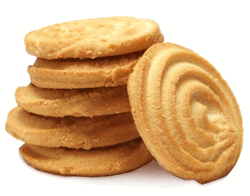NOTES FROM FOLKS
Scottish Tradition for January

Question: What is the history of Scottish shortbread and why is it celebrated every January 6th?
—Matthew T.
Answer:
I am glad you asked! Since my Grandfather was a full Scot I am very familiar with this history and tradition. And I LOVE shortbread cookies!
History of Scottish Shortbread
Scottish shortbread evolved from medieval biscuit bread, which was a twice-baked, enriched bread roll dusted with sugar and spices and hardened into a Rusk (soft, sweetened biscuit). Eventually butter was substituted for yeast, and shortbread was born. Since butter was such an important ingredient, the word "shortbread" derived from shortening. Shortbread may have been made as early as the 12th Century, however its invention is often attributed to Mary, Queen of Scots in the 16th Century. Petticoat Tails were a traditional form of shortbread said to be enjoyed by the queen. The round shortbread was flavored with caraway seeds, baked and cut into triangular wedges. The triangles resemble the shape of fabric pieces used to make petticoats during the rein of Queen Elizabeth I. Shortbread was also made in individual round biscuits called shortbread rounds and in a rectangular slab, which was cut into thin pieces known as fingers. All of these forms of shortbread are still made today.
In the beginning shortbread was expensive and reserved as a luxury for special occasions like Christmas, Hogmanay (Scottish New Year’s Eve), and weddings. Through the years it developed into an everyday favorite and is now enjoyed all around the world. Traditional shortbread consisted of three main ingredients: flour, sugar and butter. Today many varieties of shortbread exist, but most still include the traditional ingredients. The type and texture of the dry ingredients greatly influences the consistency of the shortbread. The addition of rice flour gives shortbread a grainy, crumbly texture while cornstarch (corn flour) gives it a more dense texture.
Interesting facts about Shortbread:
- In Shetland a decorated shortbread was traditionally broken over a bride’s head before she entered her new home.
- Shortbread was classified as a bread by bakers to avoid paying the tax placed on biscuits.
- The Scottish custom of eating shortbread on New Year’s Eve derives from an ancient pagan ritual of eating Yule Cakes.
- January 6th of each year is National Shortbread Day.
So there you are my Scottish friends!
- https://www.englishteastore.com/shortbread-history.html

Barbara Williams
"Dan's Right Hand"
Creative DVO Employee since 2007


